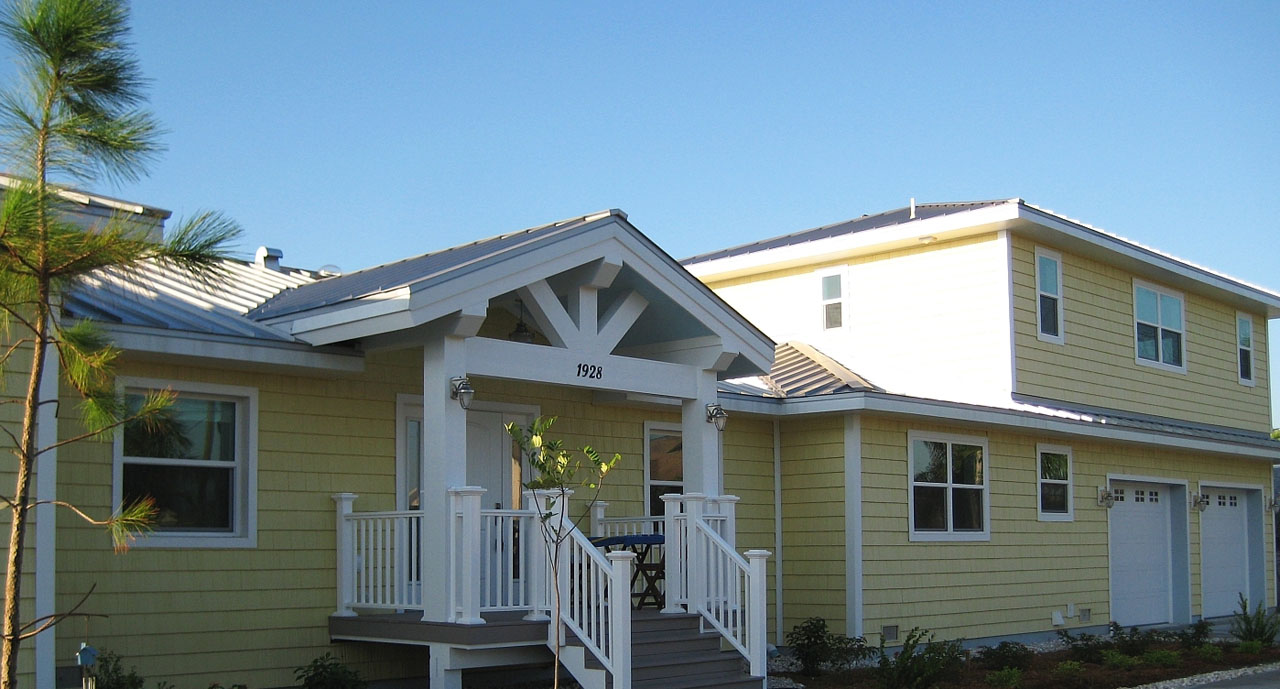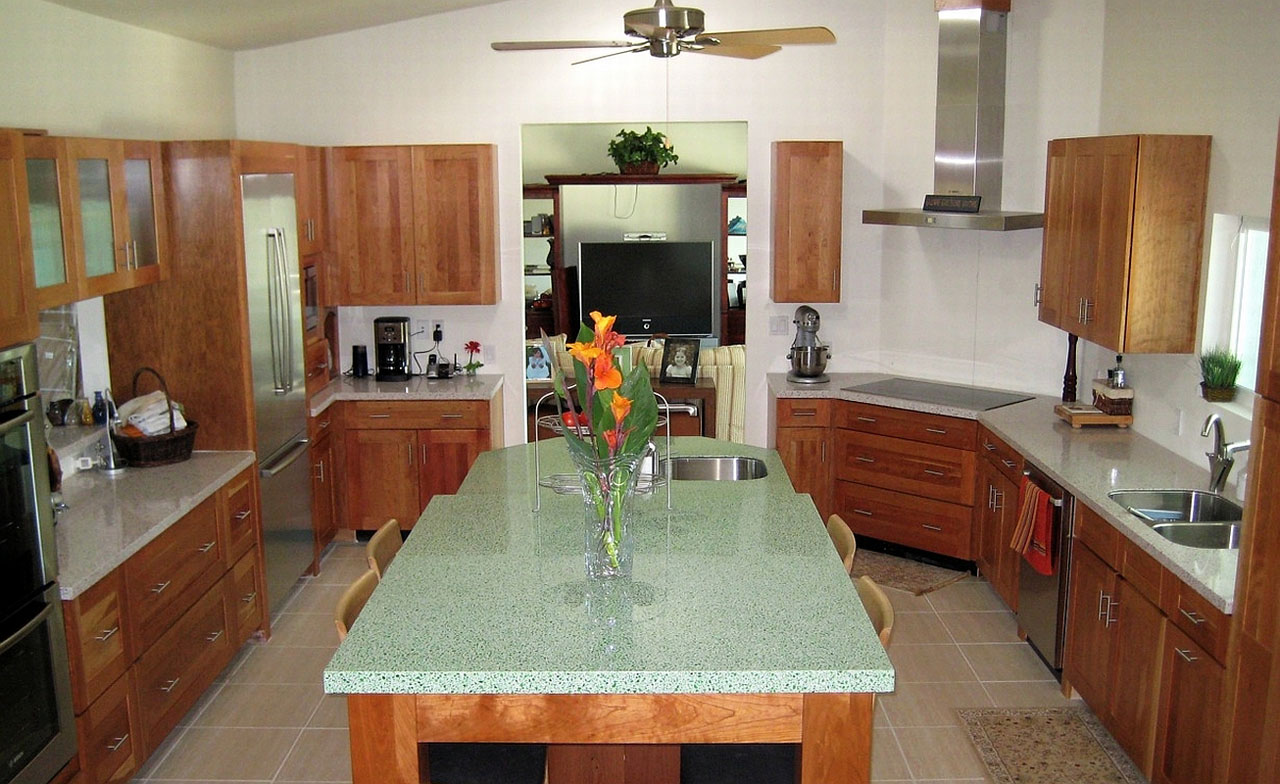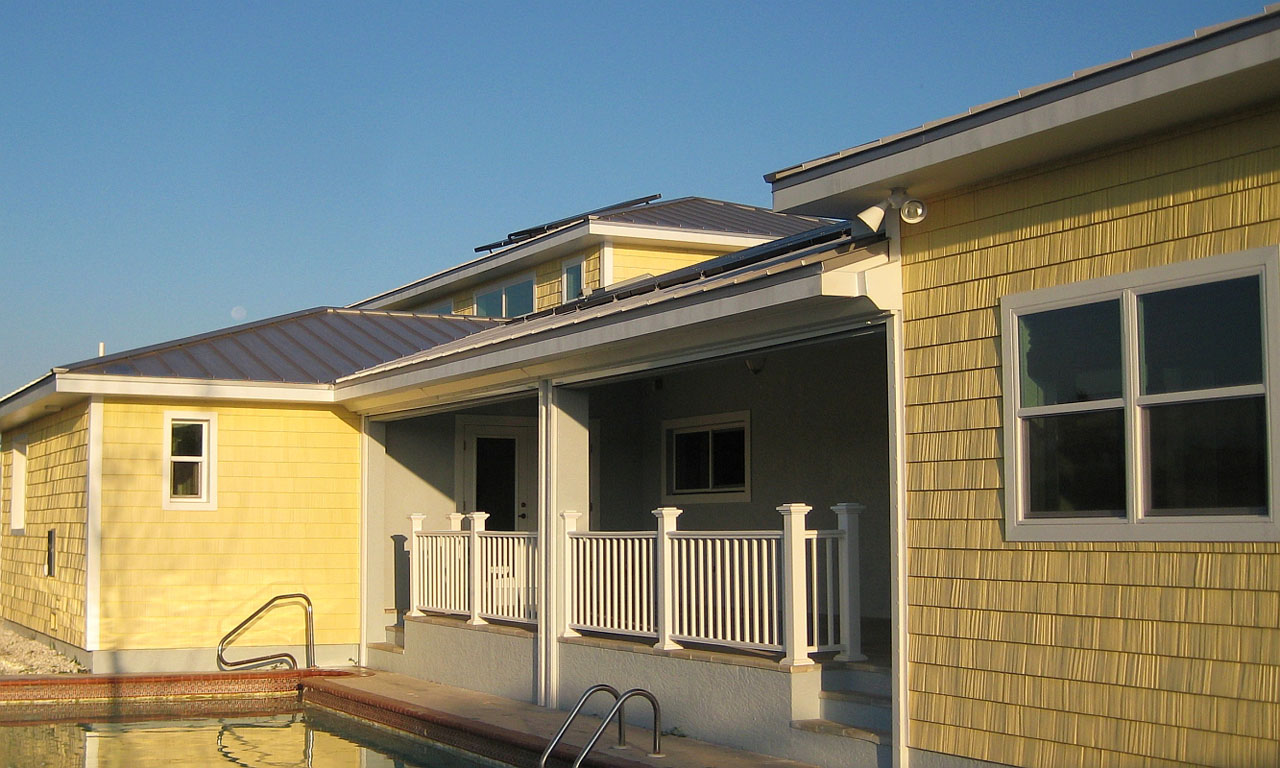Transforming Home Ownership with Achievable Greenovations
A Thought Leader’s Home Details How Sustainability Puts ‘Green’ Back in Your Pocket
American housing doesn’t get much more quintessential than a 1968 ranch style home. That’s exactly what eco-entrepreneur Paul Shahriari bought for his family in Cape Coral, Florida -- a yellow ranch clad in stucco and in need of a new roof and windows. His family would eventually come to call it their Lemonade House. The house has also been reborn as the Florida High Performance Green House, a demonstration home for Shahriari, a sustainability consultant and founder of three companies.

Shahriari, USGBC LEED Faculty Member from 2003-2008 and GreenBuild Steering Committee Co-Chair from 2004-2009, wanted a green home for his family. He also wanted to show the affordability, value and benefits of a greenovation. Having grown up on the water in Florida, this home would provide the same experience for his children. A major green renovation of the 1968 ranch would also allow him to work from a new second-story office above the garage. The entire renovation is documented online, showing how the 1,823 s.f. home became an affordable, efficient 3,032 s.f. home with an additional bedroom, two more baths, and a 844 s.f. office.

“A lot of people are thinking about green. But a big problem I have, being in this industry for 12 years, is that information is often presented too quickly and you don’t gain an understanding of the ramifications, especially on TV. It shows you some of what went on with the project and there might be some credits about ingredients that made it green, but most of that half-hour is about design or aesthetics. We really don’t get into performance,” said Shahriari.
“For green to work, to really happen, people have to implement things that save energy and water, reduce maintenance, and that are healthier for occupants and the environment -- that’s hard to get across in half an hour,” continued Shahriari.
“People can’t believe you can renovate like this. The home is $350,000 in cost, but over 30 years, it’s saving $350,000. That‘s huge. It’s the only renovation you can do that makes you money instantly, where you don’t have to wait to sell your house to recoup your investment. The moment I turn my house on, it’s saving me about $400 a month. That’s a lot of money.” Paul Shahriari
The solutions in the Florida High Performance Green House are attainable and essentially low-tech. Shahriari asked “what am I willing to pay for?” and “how does every ingredient in this house act as a small green mutual fund for my family to invest in?”
One example is wall systems. “For the existing exterior walls, we chose vinyl cedar shake siding because we would never have to spend any money on paint, but it would still make the exterior really nice with a modern, beach-style look,” Shahriari said. “And I don’t have to maintain it. We also wanted something unique because most of the homes here are stucco.”

To get the insulation on the old wall systems up to the same performance level on both new ends of the house where ICF walls are used, foam panels were utilized. Underneath the foam panels, furring strips also created an insulating air gap.
“This is a great educational opportunity because there are many homeowners who don’t have good insulation on their exterior. If I can showcase that this performs as well as the new systems, people can see the advantages of greenovating with existing walls and less demolition. We can point to ingredients like this that you can use to upgrade, modernize and customize your home,” said Shahriari.
Aesthetically, the siding’s lemonade color and cedar texture contribute to the home’s bright Key West feel. To contrast with that yellow, cellular PVC trim was used in crisp polar white. Like the siding, the trim is a limited-lifetime warranty product that comes in various colors and never needs painting. The exterior is topped with an attractive ENERGY Star-rated silver metal roof.
The home’s zesty curb appeal is also a vibrant backdrop for a family food source -- various citrus and tropical fruit trees. The sustainable landscape in turn is quenched by several cisterns that provide potable and non-potable water.
“For green to work, to really happen, people have to implement things that save energy and water, reduce maintenance, and that are healthier for occupants and the environment -- that’s hard to get across in half an hour," Paul Shahriari on how it's hard to gain an understanding of the ramifications of green through a TV program.
“A lot of people who have seen the house,” noted Shahriari, “admire the look and say ‘can we wrap our old, inefficient stucco house in this and get better energy efficiency?’ That’s the point we can make. Homeowners can see solutions in action, in an affordable, transparent way.” Interior and exterior solutions also include sprayfoam attic insulation, vinyl impact windows, LED lighting, solar hot water heating, low-VOC adhesives, efficient appliances and plumbing fixtures, and 2x6 framing with sprayfoam for the office addition.
“In my house,” added Shahriari, “what I did was create an exterior that matched the old house and provided good insulation value. The only product I could have done that with easily is vinyl. For its longevity, for its ability to take a chemical element and turn it into something that’s very long lasting, durable, and low-maintenance, vinyl is sustainable.”
Even before his home was completed, Shahriari estimated that about 400 people toured the house. “People can’t believe you can renovate like this. The home is $350,000 in cost, but over 30 years, it’s saving $350,000. That‘s huge. It’s the only renovation you can do that makes you money instantly, where you don’t have to wait to sell your house to recoup your investment. The moment I turn my house on, it’s saving me about $400 a month. That’s a lot of money.”
As a homeowner, the cost-savings appealed to Shahriari, but so did the factor of time. If he had to tape, caulk and paint every six years, he says maintenance would eat up several weekends of his ‘dad time’ -- or cost about $18,000 to hire someone over the length of the mortgage. “That’s money you could use instead to buy a solar array,” he noted. “I travel a lot -- that’s the priceless element of this for me. I want to spend my home time with my family.”

On the Florida High Performance Green House website, Shahriari will blog about the home’s sustainable effects for three years. “We’ll say ‘this is what we assumed and this is how it’s really helping us save energy, water and maintenance.’ It’s a real house, and the main thing is, it’s affordable. We used the barometer that the solutions had to be something everyone could do.”
Shahriari is aware that green is what people are talking about in media, but he knows it’s far from full-fledged reality. “What we have to do is get 300 million people to look at it and say ‘that’s smart,’” he explained.
For instance, Shahriari believes great examples with insulated siding are on the horizon. “What if people recognize that they can go to grandma’s house up north and really make a dent in skyrocketing fuel oil bills? They can tell her about this great insulated siding -- she can pick any color she wants and never have to do any maintenance. I think she’d like that and she’d like a fuel oil bill that maybe comes in at $300 versus $800. That’s how we’re going to green America, with incremental things that cut kilowatts and maintenance, and make homes healthier.”

Jonathan Wierengo
Jonathan Wierengo is the vice president of marketing and a corporate green team member of The Tapco Group, makers of building products for 50 years. A USGBC member, The Tapco Group is headquartered in Wixom, Mich., manufacturing such products as The Foundry Siding, IQm Trim by Mid-America and Tapco Tools. For more information, visit www.TheTapcoGroup.com.
Website: www.TheTapcoGroup.com
